This summer, the Blooms for Bees project and our partners at The Royal Horticultural Society (RHS) are investigating the use of Chaenostoma (also known as bacopa or sutera) and bird’s foot trefoil as bee-friendly container plants. Many traditional bedding and container plants have been bred to have large, colourful petals. As a result, their ability to produce pollen and nectar is often lost, or the tightly packed petals make these resources inaccessible to insects. There is increasing interest in bedding plants that are bright and cheerful, but also provide forage for pollinators.

Chaenostoma (bacopa)
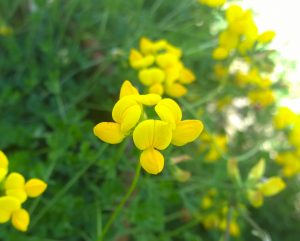
Bird’s foot trefoil
Chaenostoma is a popular trailing plant which has shown some potential to provide forage for bumblebees and other insects. We are growing and surveying three colour forms from the Abunda Colossal Series to determine how well visited they are by bumblebees. Bird’s foot trefoil (Lotus corniculatus) is a native wildflower with bright yellow and orange blooms. It is known to be an important nectar and pollen source for insects including bumblebees, but we do not know much about its value as a garden ornamental.
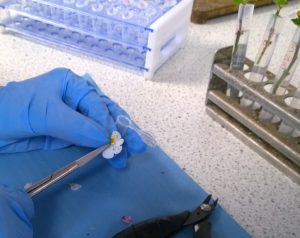
Removing Chaenostoma anthers to extract pollen

Using a capillary tube to extract nectar
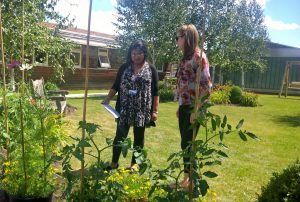
Carrying out bird’s foot trefoil questionnaire
We are growing bird’s foot trefoil and white, pink and blue colour forms of Chaenostoma in hanging baskets at the RHS Garden Wisley and in tubs at our Coventry site during summer 2017. In Coventry, our intern Hannah has been busy making assessments of nectar and pollen production for the Chaenostoma, performance as a container plant for the bird’s foot trefoil, and monitoring bumblebee visits to both plant species.
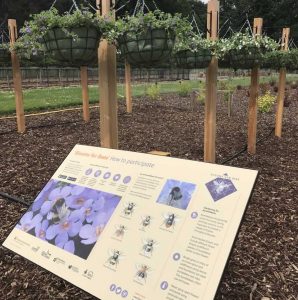
Hanging baskets and information sign at RHS Wisley
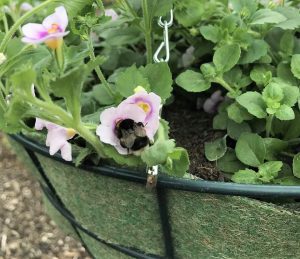
Bumblebee feeding on Chaenostoma hanging basket
Visitors to RHS Wisley can help with this trial by using the Blooms for Bees app to record bumblebees visiting the Chaenostoma and bird’s foot trefoil growing there. The plants are located in the Trials Field over the summer of 2017, with on-site instructions on how to take part using a smartphone or tablet.
The Blooms for Bees app is free to download from The App Store and Google Play.

